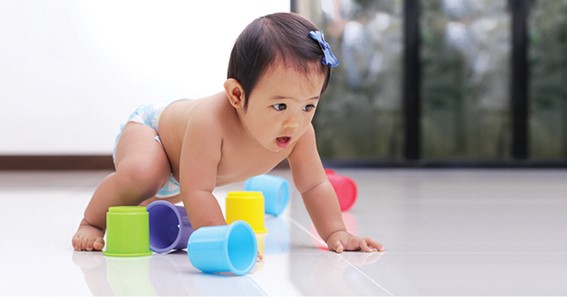The first year of a baby’s life is an incredible journey filled with milestones and discoveries. Among the many aspects of their growth, motor skill development is a crucial foundation for their overall progress.
What Is Motor Development?
Motor development refers to how your child gains control and movement coordination. At one year old, they may learn to crawl, pull themselves up, and take their first steps.
It’s exciting as they strengthen their muscles, improve balance, and develop fine motor skills like grabbing objects. Encourage and support their progress as they explore and discover their physical abilities.
These early movements are like building blocks, setting the stage for future accomplishments and shaping their ability to explore the world. Let’s unravel five effective ways to enhance your child’s motor skill development.
5 Ways On How to Develop Fine Motor Skills in Early Childhood
1.Tummy Time
If you are searching for how to develop fine motor skills in early childhood, then tummy time is something that you should try out. To help your baby’s development, placing them on their belly while they’re awake and you’re watching over them is good. This is called tummy time. Not only does it give them a fresh perspective on the world, but it also plays a vital role in fostering their motor skills.
Benefits Of Tummy Time
- Tummy time is a workout for your baby’s muscles.
- It strengthens the neck, shoulder, and core muscles.
- Strengthened muscles build blocks for future milestones like sitting, crawling, and walking.
- Tummy time encourages visual tracking skills.
- It improves hand-eye coordination as babies reach out for toys or objects.
Tips for Incorporating Tummy Time
Making tummy time a part of your daily routine doesn’t have to be daunting.
Start with short sessions of a few minutes and gradually increase the duration as your baby becomes more comfortable. Use colourful toys or a mirror to grab their attention and engage them.
You can join in by getting down on their level and making funny faces or sounds to encourage interaction. It is vital to create a safe and stimulating environment where your baby can confidently explore and develop their motor skills.
2. Engaging Playtime
Engaging playtime is a treasure trove for motor skills development in early childhood. It’s not just about having a blast; it’s about giving your child the perfect platform to grow and develop. Through play, they can refine their hand-eye coordination, dexterity, and finger strength while unleashing creativity.
Toys and Activities To Make Your Child’s Playtime More Interesting
- Building Blocks: Enhances hand control through stacking and balancing.
- Puzzles: Develops problem-solving skills and precise manipulation.
- Crayons, Markers, And Playdough: Unleashes imagination while refining grip.
- Threading Beads: Improves fine motor skills through threading.
- Buttoning Clothes: Strengthens finger agility and coordination.
- Pouring Water: Enhances fine motor skills through pouring from one container to another.
3. Babywearing and Carrying
Babywearing and carrying create a bond between you and your child and play a significant role in their motor skill development. The benefits extend beyond convenience, as these practices provide a stimulating environment for their growth.
Types of Carriers That Can Be Used In the First Year
- Soft Structured Carriers: Provide support and freedom of movement.
- Slings and Wraps: Create a cozy environment for snuggling and encourage exploration with arms and legs.
- Gentle Sway And Natural Movement While Carrying: Offer opportunities for balance, coordination, and spatial awareness.
4. Opportunities To Explore
Exploration is crucial in motor skill development, allowing children to actively engage with their environment, refining their coordination, and enhancing spatial awareness. By encouraging exploration, we stimulate their curiosity and foster the growth of their fine and gross motor skills.
Activities And Toys That Encourage Exploration
- Stacking Blocks And Sorting Shapes: Promote problem-solving and fine motor skills.
- Textured Balls And Activity Boards: Offer sensory experiences and encourage exploration.
- Outdoor Exploration Activities: Crawling on grass or playing with sand enhance gross motor skills.
5. Encouraging Physical Movement
Physical movement is a powerful catalyst for motor skill development in children. It strengthens muscles, improves coordination, and enhances balance and spatial awareness. Physical activities also boost cognitive and social-emotional development, promoting problem-solving, creativity, and self-confidence.
Including Physical Activity In Your Child’s Daily Routine
- Promote gross motor skills with crawling, rolling, or playing with balls.
- Enhance fine motor skills through building blocks, drawing, or playing with small objects.
- Shake things up with dance, try some yoga poses, or engage in outdoor games for overall physical development.
Final Words
Parents, it’s time to put these strategies into action! Remember, these efforts in their first year yield remarkable long-term benefits. Improved motor skills pave the way for future milestones, cognitive growth, and social interactions. Your dedication today will shape their potential for years to come.






